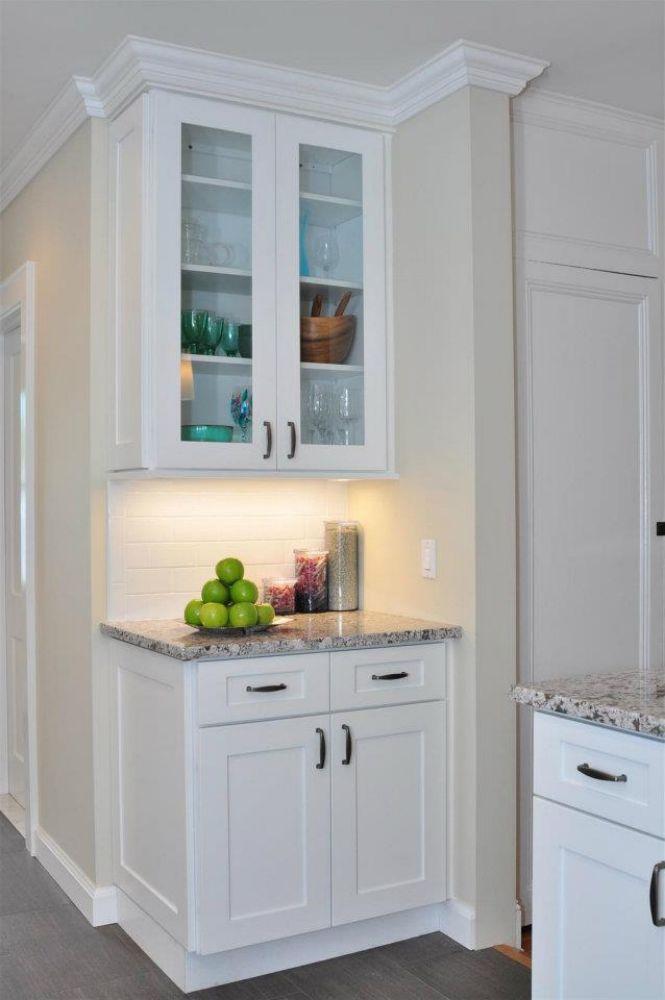Understanding the Importance of Sustainable Materials Used in Green Cabinets
The modern home design industry is shifting toward sustainability and environmental responsibility. Homeowners are becoming more aware of how their material choices impact not only their homes but also the planet. Among the many areas where eco-conscious design has taken hold, cabinetry stands out as a key contributor. The sustainable materials used in green cabinets play a major role in reducing environmental impact, improving indoor air quality, and creating long-lasting, healthy living spaces.
Green cabinets—like those found in sustainable materials used in green cabinets—represent the balance between craftsmanship, beauty, and ecological responsibility. These cabinets are made from renewable, recycled, or low-emission materials that meet strict environmental and health standards. Unlike conventional cabinetry that often relies on harmful chemicals or unsustainable wood sources, green cabinets provide a cleaner and safer alternative for both the home and the environment.
The Core Principles of Green Cabinet Design
Before delving into the sustainable materials used in green cabinets, it’s important to understand the guiding principles behind their design. Green cabinetry focuses on three main pillars: sustainability, safety, and efficiency.
-
Sustainability – This involves sourcing materials from responsibly managed forests, using recycled components, and minimizing waste during production.
-
Safety – Green cabinets are designed to emit minimal volatile organic compounds (VOCs), protecting homeowners from harmful indoor air pollutants.
-
Efficiency – The design and construction processes aim to conserve energy and reduce carbon emissions while maintaining superior durability and performance.
By following these principles, manufacturers create cabinets that not only enhance the beauty of a home but also contribute to global environmental preservation.
Why Sustainable Materials Matter in Cabinet Manufacturing
The use of sustainable materials in green cabinets is crucial for reducing deforestation, minimizing waste, and curbing pollution. Traditional cabinetry often relies on virgin wood and chemical-laden finishes that harm ecosystems and compromise indoor air quality.
In contrast, green cabinets utilize renewable resources and safer production methods. Sustainable materials ensure that the lifecycle of the product—from raw material extraction to final installation—leaves the smallest possible environmental footprint. This approach supports long-term ecological balance and encourages consumers to adopt a more responsible lifestyle.
Bamboo: A Fast-Growing Renewable Resource
One of the most popular sustainable materials used in green cabinets is bamboo. Technically a grass, bamboo grows rapidly—reaching maturity in just three to five years—making it one of the most renewable resources available. Its durability rivals that of hardwoods like oak or maple, while its grain provides a unique, elegant aesthetic.
Bamboo is often used in cabinet doors, panels, and veneers. It requires minimal pesticides or fertilizers to grow, further reducing its environmental impact. Its strength, beauty, and eco-friendliness make bamboo a leading choice for sustainable cabinetry designs.
Reclaimed and Recycled Wood
Reclaimed wood is another highly valued material in eco-friendly cabinetry. It involves repurposing wood from old barns, factories, and decommissioned structures to create new furniture and cabinets. This not only gives the wood a second life but also reduces the need for logging and raw material extraction.
The sustainable materials used in green cabinets often include reclaimed wood for its natural character and unique texture. Each piece tells a story through its aged patina and grain variations. Besides its aesthetic charm, reclaimed wood minimizes waste, preserves forests, and lowers the carbon footprint of production.
FSC-Certified Solid Wood
When new wood is used, responsible sourcing is key. The sustainable materials used in green cabinets often include wood certified by the Forest Stewardship Council (FSC). This certification guarantees that the timber is harvested from responsibly managed forests that follow strict environmental and social standards.
FSC-certified wood promotes biodiversity, prevents illegal logging, and ensures that forest ecosystems remain healthy. By choosing FSC-certified cabinetry, homeowners support ethical forestry practices and help maintain the delicate balance between consumption and conservation.
Low-Emission Plywood and MDF
Traditional plywood and medium-density fiberboard (MDF) can release formaldehyde and other harmful chemicals into indoor air. Green cabinets, however, use low-emission or no-added-formaldehyde (NAF) alternatives.
These materials are bonded with water-based or soy-based adhesives that emit minimal VOCs, contributing to safer indoor environments. The sustainable materials used in green cabinets ensure that your home remains free of toxic fumes, making them especially suitable for families, schools, and healthcare facilities.
Recycled Metal Components
Sustainability isn’t limited to wood-based materials. The sustainable materials used in green cabinets often include recycled metal components for handles, hinges, and framework. Aluminum and steel are frequently repurposed from post-consumer or industrial waste, drastically reducing the need for new metal extraction.
These recycled metals not only add structural strength but also bring a sleek, modern appeal to cabinetry. Using recycled materials lowers energy consumption during manufacturing and prevents excess waste from ending up in landfills.
Non-Toxic Finishes and Sealants
Cabinet finishes play a critical role in determining air quality within a home. Traditional finishes often contain high levels of VOCs, which continue to off-gas for years after installation. In contrast, the sustainable materials used in green cabinets include non-toxic, low-VOC, or water-based finishes.
These eco-friendly coatings protect the wood while maintaining natural ventilation and minimizing odor. Non-toxic finishes preserve the aesthetic value of the cabinets while promoting a cleaner, healthier living space.
Recycled Plastic and Composite Materials
In addition to wood and metal, some eco-friendly cabinets incorporate recycled plastic or composite materials. These components may come from post-consumer products like bottles, packaging, and other plastics that would otherwise contribute to waste.
The sustainable materials used in green cabinets harness innovative technology to transform plastic waste into durable, attractive cabinetry elements. This not only reduces landfill contributions but also gives new life to materials that would otherwise harm the environment.
Formaldehyde-Free Adhesives and Glues
Adhesives are another important consideration in sustainable cabinetry. Conventional glues often contain urea-formaldehyde, which releases toxins over time. The sustainable materials used in green cabinets feature formaldehyde-free or soy-based adhesives, which bond materials securely without emitting dangerous gases.
By eliminating toxic chemicals from the construction process, manufacturers ensure that cabinets remain safe for human health and contribute to better indoor air quality.
The Role of Glass in Sustainable Cabinet Design
Glass is a timeless and eco-friendly material often used in green cabinetry for cabinet doors or inserts. It’s fully recyclable and adds sophistication while reducing the reliance on additional wood or plastic materials.
The sustainable materials used in green cabinets may include tempered or recycled glass, which enhances both sustainability and design versatility. Glass elements allow natural light to flow through the room, creating a brighter, more energy-efficient space.
The Impact of Sustainable Materials on Indoor Air Quality
Indoor air quality has become a major concern in modern living. The sustainable materials used in green cabinets play a direct role in maintaining healthy air by minimizing off-gassing and harmful emissions.
By eliminating or reducing VOCs, these materials help homeowners avoid respiratory irritation, allergies, and other health risks associated with indoor pollutants. Cleaner air translates to a more comfortable and healthier home environment for everyone.
The Longevity and Durability of Sustainable Cabinets
Eco-friendly doesn’t mean fragile. The sustainable materials used in green cabinets are chosen not only for their environmental benefits but also for their durability and long lifespan. High-quality bamboo, reclaimed wood, and FSC-certified materials resist warping, cracking, and decay.
These materials are engineered to withstand daily use while maintaining their structural integrity and beauty. This long-term durability means fewer replacements, less waste, and greater resource conservation.
Energy Efficiency in the Manufacturing Process
Green cabinet manufacturing goes beyond materials—it extends to the production process itself. Factories that produce eco-friendly cabinetry often use energy-efficient equipment, solar power, and waste recycling systems.
This ensures that the sustainable materials used in green cabinets are not only environmentally responsible but also produced in a manner that minimizes carbon emissions. Energy-efficient manufacturing complements the materials used, creating a truly sustainable product from start to finish.
Combining Style and Sustainability
One misconception about eco-friendly cabinetry is that sustainability limits design flexibility. In reality, the sustainable materials used in green cabinets offer a wide array of design possibilities. From modern minimalist layouts to rustic farmhouse looks, sustainable materials adapt beautifully to any aesthetic.
Homeowners can choose from different textures, grains, and finishes that reflect their unique taste—all while maintaining environmental integrity. Sustainable design proves that style and responsibility can go hand in hand.
The Role of Certification in Verifying Sustainability
Certifications such as Greenguard Gold, CARB Phase 2, and LEED compliance help consumers verify the authenticity of eco-friendly products. The sustainable materials used in green cabinets undergo extensive testing to ensure that they meet rigorous safety and sustainability criteria.
These certifications provide transparency and peace of mind, assuring homeowners that their cabinetry contributes positively to both their health and the environment.
Economic and Environmental Benefits
While sustainable cabinets may initially cost more, they offer long-term savings through durability, reduced maintenance, and energy efficiency. The sustainable materials used in green cabinets also promote local economies by encouraging responsible sourcing and manufacturing practices.
Environmentally, the benefits include reduced deforestation, lower carbon emissions, and improved resource management—ensuring that future generations inherit a healthier planet.
Maintaining and Cleaning Green Cabinets
Caring for eco-friendly cabinets involves using gentle, non-toxic cleaning solutions. Harsh chemicals can degrade even the most sustainable finishes over time. By using natural cleaners like vinegar, baking soda, or plant-based sprays, homeowners can protect both the cabinets and their indoor air quality.
The sustainable materials used in green cabinets are designed to require minimal maintenance, making them as practical as they are responsible.
The Future of Sustainable Cabinet Manufacturing
The future of green cabinetry looks bright. Manufacturers continue to innovate with new sustainable materials used in green cabinets, such as bioplastics, recycled composites, and plant-based resins. These advancements promise even greater environmental performance and durability.
As awareness and demand grow, the cabinetry industry will continue to shift toward sustainable solutions that prioritize health, quality, and ecological preservation.
Conclusion: Building a Better Future with Sustainable Cabinets
The sustainable materials used in green cabinets define the future of home design. They combine environmental responsibility, health benefits, and aesthetic appeal to create products that serve both people and the planet.
By choosing cabinets built from bamboo, reclaimed wood, FSC-certified timber, low-emission plywood, and non-toxic finishes, homeowners take a meaningful step toward a greener future. These materials reduce pollution, promote sustainability, and ensure long-lasting quality.
Ultimately, sustainable cabinetry is more than a design choice—it’s a lifestyle decision that reflects care for the environment and a commitment to healthier living. With innovative materials and eco-friendly craftsmanship, green cabinets represent the perfect harmony of beauty, durability, and responsibility.
Read: Impact of cabinets on indoor air quality
Read: Difference between Greenguard Gold and regular cabinets

